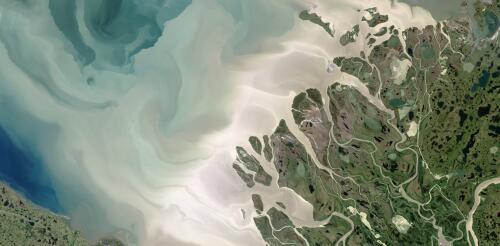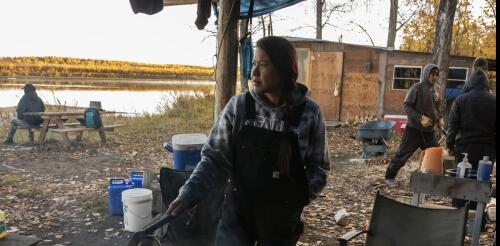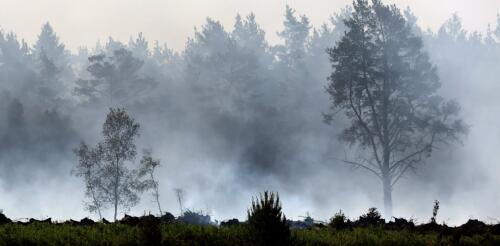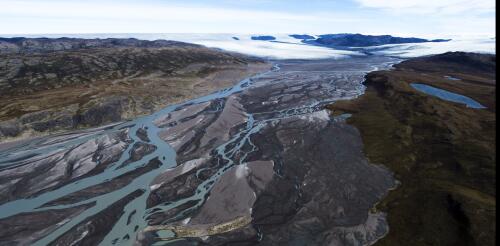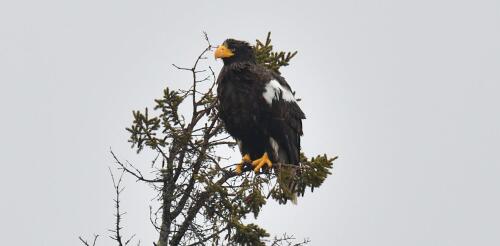Arctic
As the Arctic warms, its mighty rivers are changing in ways that could have vast consequences – not only for the Arctic region but for the world. Rivers represent the land branch of the earth’s hydrological cycle. As rain and snow fall, rivers transport freshwater runoff along with dissolved organic and particulate materials, including carbon, to coastal areas. With the Arctic now warming nearly four times faster than the rest of the world, the region is seeing more precipitation and the permafrost is thawing, leading to stronger river flows. Major river basins of the Arctic region. NOAA Arctic Report Card We’re climate scientists who study how warming is influencing the water cycle and ecosystems. In a new study using historical data and sophisticated computer models of Earth’s climate and hydrology, we explored how climate change is altering Arctic rivers. We found that th...
The year 2023 shattered the record for the warmest summer in the Arctic, and people and ecosystems across the region felt the impact. Wildfires forced evacuations across Canada. Greenland was so warm that a research station at the ice sheet summit recorded melting in late June, only its fifth melting event on record. Sea surface temperatures in the Barents, Kara, Laptev and Beaufort seas were 9 to 12 degrees Fahrenheit (5 to 7 degrees Celsius) above normal in August. While reliable instrument measurements go back only to around 1900, it’s almost certain this was the Arctic’s hottest summer in centuries. Summer heat extremes in 2023 and over time. NOAA, Arctic Report Card 2023 The year started out unusually wet, and snow accumulation during the winter of 2022-23 was above average across much the Arctic. But by May, high spring temperatures had left the North American snowpack at a recor...
The blanket of wildfire smoke that spread across large parts of the U.S. and Canada in 2023 was a wake-up call, showing what climate change could feel like in the near future for millions of people. Apocalyptic orange skies and air pollution levels that force people indoors only tell part of the story, though. As global temperatures rise, fires are also spreading farther north and into the Arctic. These fires aren’t just burning in trees and grasses. New research on the exceptional Arctic fire seasons of 2019 and 2020 points to fires moving into the ground as well. These underground fires are known as “zombie fires,” and there are a number of reasons to worry about the trend. A volunteer fights ‘zombie’ peat fires in Siberia in 2020, a year when an estimated 100,000 square miles of forest, grassland and peatland burned, according to an International Association of Wildland Fire analysis. Alexa...
About 400,000 years ago, large parts of Greenland were ice-free. Scrubby tundra basked in the Sun’s rays on the island’s northwest highlands. Evidence suggests that a forest of spruce trees, buzzing with insects, covered the southern part of Greenland. Global sea level was much higher then, between 20 and 40 feet above today’s levels. Around the world, land that today is home to hundreds of millions of people was under water. Scientists have known for awhile that the Greenland ice sheet had mostly disappeared at some point in the past million years, but not precisely when. In a new study in the journal Science, we determined the date, using frozen soil extracted during the Cold War from beneath a nearly mile-thick section of the Greenland ice sheet. A brief look at the evidence beneath Greenland’s ice sheet and the lessons its holds. The timing – about 416,000 years ago, with largely ice-free conditions last...
The Steller’s sea eagle is one of the largest and most aggressive raptors in the world. With an 8-foot wingspan and striking white markings, these birds tower over their bald eagle cousins. Steller’s are sublime, but they aren’t beautiful in the way people often sentimentalize animals. Most adult Steller’s survived by beating their weaker sibling to death in the nest within weeks of birth and were rewarded for their aggression by nurturing parents. No wonder they can fight off brown bears and hunt on the sea ice of the Russian Arctic. Since mid-2020, one individual Steller’s sea eagle has drawn national media attention because of the vast distances it has traveled – from Russia’s Kamchatka Peninsula to Alaska, then to Texas, eastern Canada, New England, and most recently, a reported sighting on May 2, 2023 in Newfoundland – and the extreme lengths to which birders are going to glimpse it. Biologists have learned remarkable th...
